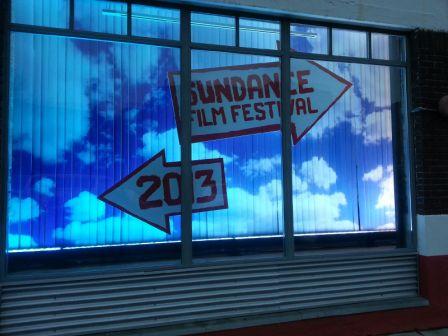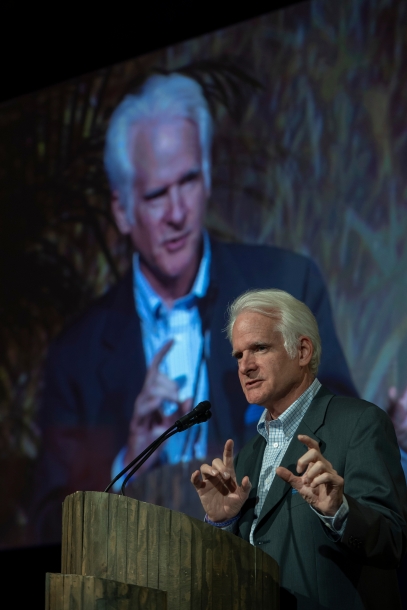You are here
“Pandora’s Promise” – Can it Be Kept?
Robert Stone has produced a provocative and important new documentary on nuclear power that was screened this week at the Sundance Film Festival. But as important as it is, Pandora’s Promise is a film that in its current configuration undermines itself.
Stone sets out to document how the dangers of our unstable climate have pushed him and a set of people featured in the film to revisit their long-held opposition to nuclear power and instead embrace fourth generation nuclear, or Integral Fast Reactor (IFR) technology. Fourth generation nuclear may indeed offer safety improvements over current operating nuclear reactors that are fundamental game changers. But the credibility of that notion is called into question by other aspects of this movie that is at once passionate and heartfelt and very unsatisfying.
The cast of characters chronicled throughout the movie are not only never identified in terms of who they are or what they do, but also engender little empathy or interest as they tell their stories. They are clearly sincere in their various professional assertions and descriptions but they lack depth. We learn almost nothing about them as people in the course of the movie; it is almost as if they are actors playing themselves rather than real people telling real stories.
And some of the assertions and scenes strain the limits of credulity. Michael Shellenberger, never identified beyond his description of himself as an environmental activist, voices what he claims is a common view -- that he was stunned to learn that background radiation exists naturally on earth and is not purely a human creation. Really? Perhaps he will say more about this during his scheduled appearance on The Colbert Report on Monday, January 28th.
And a few scenes also look like they might have been staged. Do scientists visiting the exclusion zone around Fukishima really collect radiation data wearing radiation suits with no head covering or breathing apparatus? Are they partially suited to make the point that suits aren’t really needed at all or conversely to show brave scientists doing what it takes to get important health data? Or is it just to add dramatic tension to the film?
But more important than these small items, the movie seems to cherry-pick and even distort data to about nuclear power, past and present, to make the case for its future. I posed a few questions about this. The movie claims, correctly, that Chernobyl claimed only 28 deaths due to Acute Radiation Syndrome and drums home the authenticity of this data point with a ponderous parade of acronyms over the highlighted line from the international report coordinated by WHO ("Chernobyl’s Legacy: Health, Environmental and Socio-Economic Impacts"). But there is no mention made – other than to skewer Helen Caldicott – of equally well-documented facts such as the following from a WHO overview: Health Effects of The Chernobyl Accident.
- “A large increase in the incidence of thyroid cancer has occurred among people who were young children and adolescents at the time of the accident…. [And] 5,000 cases of thyroid cancer have now been diagnosed to date among children ….”
- “Recent investigations suggest a doubling of the incidence of leukemia among the most highly exposed Chernobyl liquidators.”
- “The Expert Group concluded that there may be up to 4,000 additional cancer deaths among the three highest exposed groups over their lifetime.”
In the same way the film passes over these facts, it presents a compelling but fatuous claim that all the waste generated by all commercial nuclear reactors from 1958 to the present day could be stored on a single football field. I asked about this after the screening and the very vague and dodgy answer only confirmed my suspicion that this benign metaphor obfuscates more than it educates. To begin with, physical size is not the right way to measure nuclear radiation. It is like a doctor talking about big and small pills rather than doses and efficacy.
But so be it, if size is to be our unit of measure. There are 72,000 tons of commercial nuclear waste in the U.S. stored either as fuel rods immersed in water or in dry cask above-ground storage at some seventy-seven sites in thirty-five states. Leaving aside the considerable scientific debate about using short-term techniques for long-term storage, there is no way reactor waste stored in this manner can fit on a football field.
So a sleight of hand is needed to justify this claim. The calculation seems to be based on the quantity of isolated hot nuclear pellets in the abstract. In reality their intense radioactive power is only contained by surrounding them with zirconium shielding and immersing them in tanks with re-circulating water and additional chemical coolants. They exist only within this waste containment system. Thus, the actual combined footprint of the four spent fuel waste pools at the Fukushima nuclear plant in Japan, for example, measured 48m x 31m. Waste from this one plant alone would thus stretch about two-thirds of the way across a football field and from one end- zone to midfield.
Joined on stage Thursday by two characters from the film – Gwyneth Cravens and Richard Rhodes -- Robert Stone seemed, to his credit, to be uncomfortable with they way both totally failed to answer my questions about thyroid cancer and the football metaphor. Gwyneth Cravens clearly did not want to answer the question of how the football calculations were arrived at and stumbled through a basic explanation of techniques for storing nuclear waste. And beyond waxing rhapsodic about the lofty intentions of the first prime minister of Belarus, Vyachaslaw Kyebich, Rhodes spoke not at all to the results of extensive international medical research on the health effects of Chernobyl – admittedly an area outside his considerable expertise on the history of nuclear weapons.
These serious flaws in Pandora’s Promise undercut its credibility. While it is true that fear of radiation and short-term cancer vastly exceeds documented deaths from commercial nuclear accidents, that fear has been fanned not just by environmentalists and the media – which the movie happily indicts – but by a culture of secrecy, dissembling and false assurances propagated for decades by the nuclear power industry.
We have been promised energy “too cheap too meter” since the dawn of the nuclear age. Perhaps fourth generation nuclear power is a key piece of the puzzle to ensuring climate stability for future generations. But before citizens or policymakers agree to let Pandora out, her promise is going to need to be documented with much greater credibility than is offered by the unidentified characters in this movie.
- jonathan.halperin's blog
- Log in or register to post comments


